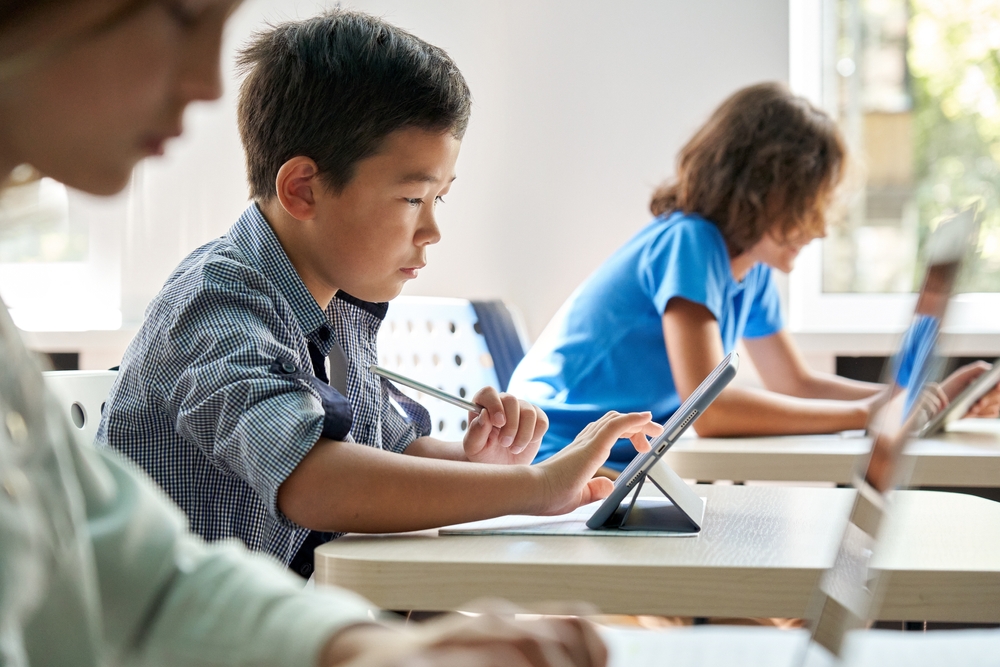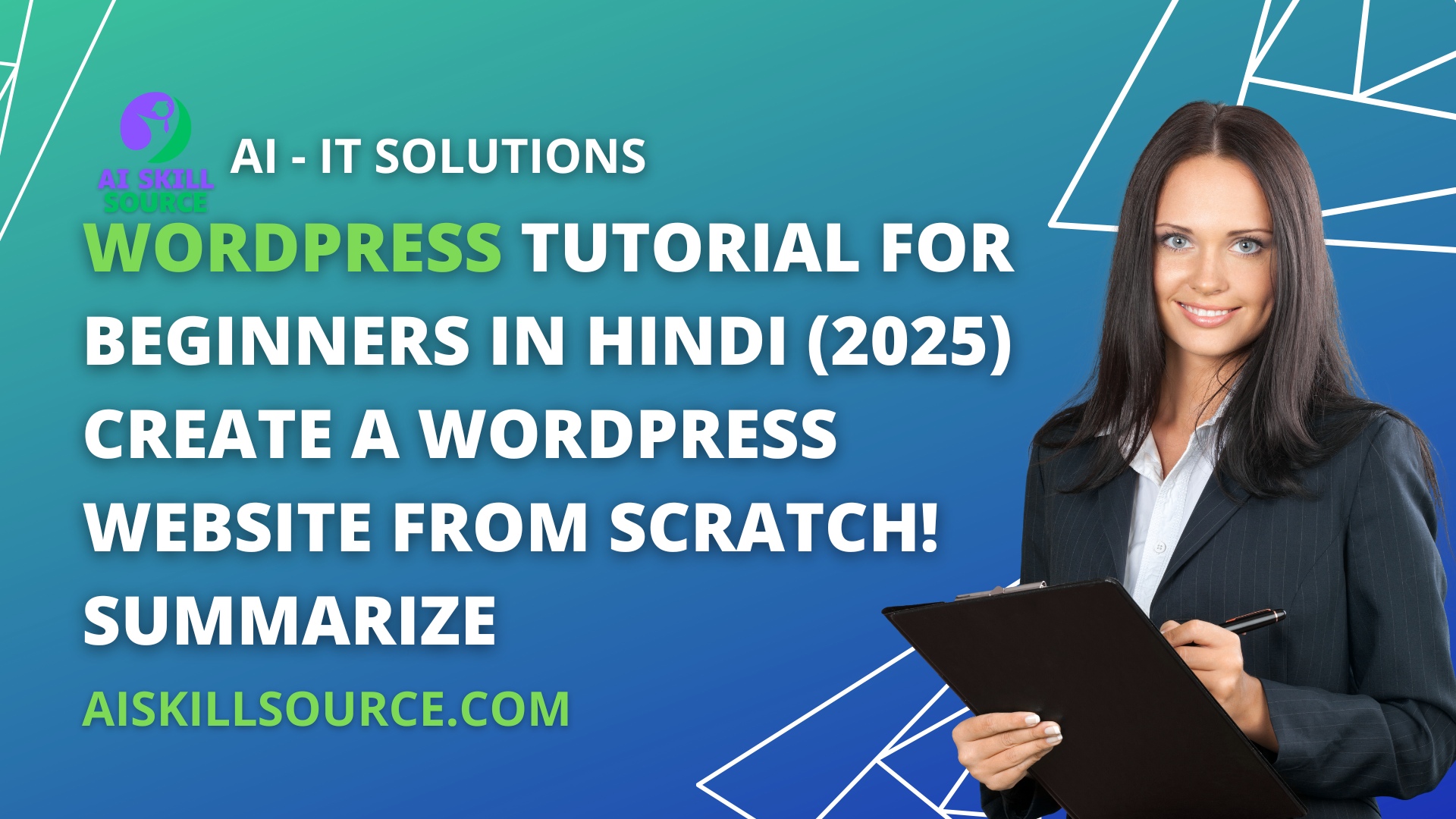
Introduction to Modern Educating Methods for eLearning
In our quickly evolving digital age, conventional classroom education has encountered a powerful transformation resulting in the emergence of eLearning. As training embarks upon the digital panorama, revolutionary educating methods for eLearning develop into more and more essential. This chapter serves to introduce the reader to those methods and their significance in enhancing studying experiences exterior the Studying Administration System (LMS) showroom.
eLearning, as a type of distance training, has provided a brand new avenue for learners and educators alike, breaking bodily limitations and creating a versatile and accessible studying atmosphere. The traditional blackboard and chalk have been changed with online modules, digital sources, and digital school rooms, altering the best way we each train and study.
Nevertheless, an efficient shift from conventional to digital studying includes more than simply utilizing technological instruments. It requires a considerate strategy, revolutionary educating methods, and a concentration on creating partaking, collaborative, and learner-centered experiences.
Modern educating methods for eLearning embody an array of methodologies purposefully designed to cater to various kinds of learners. These versatile strategies, powered by digital instruments, use interactive multimedia, gamification, customized studying paths, and different distinctive techniques to make studying partaking, efficient, and enjoyable.
Understanding these methods is essential for educators within the eLearning discipline as conventional educating strategies usually fall qquicklyin on-line studying environments. For example, digital school rooms could fail to carry scholars’ attention identically to face-to-face interplay in a bodily classroom. This impacts scholar participation and general studying. Modern education methods assist in beating these challenges, partaking in college students within the studying course, enhancing information retention, making certain studying consistency, and offering a platform for steady suggestions.
Recreation-based studying, interactive video periods, social studying, micro-learning, and digital actuality, amongst others, stand out in revolutionizing eLearning. These methods foster energetic studying and promote self-directed studying by encouraging learners to take management of their training.
It’s essential to do not forget that the purpose of those revolutionary educating methods goes past simply imparting information. Their purpose is to construct vital considering abilities, promote collaboration and communication, and foster an immersive and interesting studying expertise. Implementing such methods successfully in eLearning prospects requires a deep understanding of those strategies, the know-how that powers them, and the dynamics of the digital studying atmosphere.
Whereas the LMS gives a handy platform for course administration, focusing solely on this device can restrict the capability to totally discover the potential of online training. As training professionals, stepping exterior the LMS showroom results in extra revolutionary and artistic functions of those educating methods, finally leading to wealthy, impactful studying experiences.
All through this journey, keep in mind, that adapting to eLearning doesn’t merely imply utilizing new instruments, incorporating fashionable buzzwords, or ticking off the know-how packing containers. As an alternative, it’s about remodeling how we train, making studying extra interactive, immersive, versatile, and customized expertise. Let’s dive in and discover how these educating methods can revolutionize eLearning.

Past the LMS Showroom: Rethinking Educating within the Digital Surroundings
Studying Administration Techniques (LMS), with their pre-packaged units of instruments and layouts, can usually really feel like showrooms – glossy, sterile, and designed for the plenty. Whereas these LMS platforms function n a priceless basis for online training, they usually restrict innovation and personalization. To revolutionize eLearning and make it extra interesting to college students, educators have to step out of the LMS showroom and revisit their educating methods within the digital atmosphere.
Step one in the direction of rethinking educating within the digital atmosphere is knowing that online training is inherently different from conventional in-class training. Online education requires a shift within the mindset – from viewing know-how as a supplementary device to viewing it as a platform carrying its distinctive educating and studying prospects.
Subsequently, educators ought to concentrate on making use of rules of learner-centered design to create partaking and significant online studying experiences. This might imply, for instance, shifting from a ‘one-size-fits-all’ mannequin of instruction to an extra customized pedagogical strategy, similar to adaptive studying or competency-based studying. These approaches acknowledge that college students study at their very own tempo and have numerous wants, strengths,s, and preferences. Incorporating multimedia parts like movies, podcasts, and interactive quizzes enhances the worth of the course supplies, catering to different studying types.
One other vital side to think about is the social and group part of studying. Many LMS showrooms are inherently restricted in their capability to facilitate real-time interplay and collaboration, which are essential to the educational course. Integrating social networking instruments into digital studying environments permits for a stronger sense of belonging, engagement, and group amongst college students.
Moreover, adopting a blended or hybrid strategy for eLearning can provide excellent steadiness in presenting theoretical ideas, enabling social interplay, and offering sensible functions. Permitting college students to study unbiased research by way of online sources after which utilizing a gathering platform to debate, collaborate, and apply their information can primarily mimic the engagement of the standard classroom setup.
Evaluation methods within the digital atmosphere additionally should be re-examined. Relying solely on conventional quizzes and exams usually results in superficial studying. As an alternative, educators can encourage deeper studying by adopting extra artistic and diversified evaluation strategies. Mission-based assignments, digital portfolios, peer-review methods, and self-assessment strategies are some methods to evaluate the talents and information gained throughout an eLearning course.
When rethinking educating within the digital atmosphere exterior of the confines of the LMS showroom, the innovation potential is limitless. By integrating learner-centered design strategy, selling social interplay, making use of blended studying methods, and introducing numerous evaluation strategies, educators can create vibrant, energetic, and interesting online studying experiences. One ought not to forget that the digital atmosphere will not be a barrier but a strong device to complement educating and studying.

Adopting New Educating Strategies for On-line Training
Embracing change and innovating the standard educating fashions are among the key parts of the profitable transition to the eLearning exterior of the LMS showroom. With a broad array of digital instruments at our disposal, there are rising alternatives to undertake a mess of thrilling new strategies to complement the net studying expertise.
Among the many new educating strategies for online training, using interactive strategies siat the forefront. This strategy makes studying extra partaking, permitting college students to actively take part, make choices, and see the results of these choices in a protected atmosphere. Interactive educating strategies might embody a wide range of actions similar to using digital simulations, video games, quizzes, or group duties utilizing online collaboration instruments.
The flipped classroom mannequin is one other revolutionary educating technique that may very well be adopted in on-line training. On this mannequin, college students are launched to new ideas and materials independently, usually via pre-recorded lectures or digital sources earlier than the category session. The precise class time is then used for discussions, clarifications, and hands-on workouts. This participant-centered strategy promotes self-paced studying and encourages learners to achieve a deeper understanding of the topics.
Microlearning is one other technique that may be useful in ononlineraining. As the title suggests, microlearning includes breaking down course content material into small, digestible chunks, usually taking 5 to 10 minutes to finish. This system helps information retention and allows the learner to handle their very own studying tempo.
The arrival of Synthetic Intelligence has opened up new prospects within the education area. AI can be utilized to ship customized studying experiences to particular person college students, based mostly on their studying patterns, pursuits, and strengths. Digital education assistants, good content material, and predictive analytics are all made attainable with AI.
Peer-to-peer studying can be an efficient academic device in an internet setting. This collaboration-centric mannequin includes learners collaborating in online dialogue boards or working in collaborative teams on shared duties. This system promotes a way of the group within the digital classroom and might create an extra partaking studying atmosphere.
Built-in studying pathways, which make the most of a wide range of the aforementioned strategies, can present a versatile but complete online studying expertise. These pathways provide a collection of interconnected steps designed to assist learners perceive a fancy topic or talent set.
Adopting these new educating strategies on the earth of online training can promote a greater studying expertise, guarantee course materials retention, and foster a way of group among learners. Nevertheless, lecturers want to stay agile, versatile, and resourceful to repeatedly adapt and enhance these strategies based mostly on the learners’ suggestions and technological developments.
Keep in mind, the final word purpose of educating, be it offline or online, is to foster studying. Essentially the most profitable educating strategies are those that greatest assist college students to study, have interaction, and thrive on their academic journey.

Sensible Methods for Enhancing On-line Studying Experiences
Understanding and making use of sensible methods are essential in enhancing online studying experiences. As eLearning professionals, it’s our accountability to make sure that every person maximizes the chance to study, interact, and reach a digital atmosphere. Let’s discover a couple of methods that have been confirmed to be efficient in enhancing scholar engagement and studying outcomes.
Firstly, gamification is a particularly efficient strategy within the digital studying panorama. By incorporating parts like factors, leaderboards, badges, and ranges into the educational course, you make the expertise extra interactive and interesting. It introduces a way of competitors and rewards that motivate learners to take part extra and attain their tutorial targets.
One other technique pertains to the design of the educational content material. Content material must be divided into digestible modules or “bite-sized studying”. Breaking coursework into smaller models assists the learner’s absorption of the matters, reducing cognitive overload. It additionally gives the flexibility for learners to proceed at their most well-liked tempo.
Then, there’s social studying, which promotes interplay among learners. This may be finished via dialogue boards, collaborative assignments, and even dwell chat features. For example, encouraging learners to share their insights or experiences can enrich the educational journey.
Customized studying paths comply with subsequent. This technique is about tailoring the coursework to the personal wants of the learner. This might imply recommending further sources for learners combating certain matters or extending harder assignments for those needing a problem. This custom-made strategy boosts engagement and ensures that the learner’s distinctive wants are addressed successfully.
Simulations and immersive experiences present one other avenue for sensible eLearning. By means of using VR or AR know-how, learners can take part in practical eventualities related to their coursework. This hands-on strategy facilitates a deep understanding of complicated topics and creates a memorable studying expertise.
Lastly, fixed suggestions are important. Its goal isn’t to criticize however to repeatedly assess the net learner’s progress and provide constructive options for enhancement. Be sure the suggestions are well-timed and particular, and encourage self-reflection. This permits learners to maintain observation of their strengths, perceive areas in the place they’re struggling, and devise methods to reinforce studying.
Lastly, do not forget that know-how is merely a device. Whereas we have to faucet into the alternatives it presents, let’s not overlook the significance of the human aspect in online studying. EEndeavourto offers assistancpreservesrve communication, conand structsruct a studying group that feels accessible and responsive to every learner’s issues.
In conclusion, these sensible methods assist convey studying to life and interact learners exterior conventional Studying Administration Techniques. All in all, the target is to create an atmosphere the place learners are impressed to pursue information, will not be afraid to make errors, and most significantly, actively take part in their studying journey.

Leveraging Studying Expertise Design in eLearning
Studying expertise design (LXD) has developed into a necessary side of flowing eLearning ecosystems. It’s more than simply the design of an internet course; it’s about crafting significant, related, and interesting experiences that allow learners to accumulate new information or abilities successfully. When appropriately leveraged in eLearning environments, LXD can improve the standard of content material and encourage learners to advance via their academic journey.
The core of LXD is empathy for the learner, specializing in offering extra partaking and efficient studying expertise tailor-made to their distinctive wants and preferences. Conventional tutorial design primarily focuses on transmitting information, however LXD locations learners at the heart of the design course. This student-centric strategy closely influences the learners’ engagement, comprehension, and retention charges.
With the speedy development of know-how, studying expertise designers ought to use interactive multimedia content material, augmented actuality (AR), digital actuality (VR), and different rising applied sciences to complement eLearning expertise. These applied sciences can convey course materials to life and supply immersive, hands-on studying experiences that conventional school rooms can hardly ever provide. Furthermore, built-in analytics enable real-time suggestions and adjustment of the educational expertise, additionally enhancing the effectiveness of LXD.
One other key aspect of LXD is social studying, which capitalizes on interactions amongst learners for enhanced studying expertise. This aspect may be leveraged in eLearning via boards, webinars, and collaborative online tasks. These instruments can create a way of group and allow peer-to-peer studying, providing enhanced engagement and a deeper understanding of all materials.
Customized studying paths are one other very important side of LXD in eLearning. With the know-how accessible, the ‘one dimension matches all’ strategy doesn’t apply to trendy learners, who are more and more searching for customized and versatile studying experiences. Accommodating a particular person’s studying preferences and velocity, enabling learners to decide on what they study, can enhance learner engagement and completion charges.
Lastly, eLearning should present a seamless personal expertise that’s intuitive and accessible. That is the place where UX/UI design comes into play. The training platform interface must be straightforward to navigate, aesthetically pleasing,g and intuitive. For example, data and actions must be straightforward to seek out, and crucial software programs or plugins ought to work seamlessly throughout numerous gadgets and platforms.
In conclusion, leveraging studying expertise design in eLearning implies a shift from merely delivering content material to creating partaking, significant,nt and personalized studying experiences. By inserting the learner in the heart of the design course and harnessing rising applied sciences, it’s attainable to offer an efficient and interesting digital studying atmosphere that caters to numerous studying wants and preferences, paving the best way for way forward training.

Case Research of Modern Educating Strategies in eLearning
In analyzing revolutionary educating methods for eLearning, it’s useful to think about real-world functions. In this regard, we’ll talk about three fascinating casecasesresearch the place cutting-edge educating strategies facilitated a wealthy online studying atmosphere.
Our first case research hails from an academic know-how firm, the place interactive video classes have been put to glorious use. The incorporation of interactive parts throughout the educational materials added a dynamic layer to the traditional, unidirectional video content material. College students got the chance to check their understanding at numerous intervals throughout the video, making studying an energetic, participatory course. Instant suggestions augmented studying efficacy, validating right responses, or correcting errors. This revolutionary educating techniqueremodeledd a historically passive exercise into attractive, interactive expertise, driving spectacular enhancements in data retention.
Within the second case research, a crew of educators at a distance studying establishment employed augmented actuality (AR) to complement their online biology course. The AR device allowed college students to conduct digital dissections, discover cell buildings, and observe ecosystem dynamics – all on their digital screens. This not only introduced the subject material alive but also fostered a hands-on studying expertise, which was previously thought unique to the standard classroom.
Our remaining case research includes a college that utilized game-based studying in educating complicated statistics rules online. The college created an internet recreation plan where college students might gather information, run analyses, and report findings to stage up. This strategy made statistics extra palatable, encouraging energetic studying, vital consideration, and problem-solving. Scholar surveys revealed that the sport induced excessive engagement ranges and considerably elevated comprehension and retention of statistical ideas.
This case research illustrates the limitless prospects of eLearning exterior conventional LMS boundaries. They present that with a little bit of creativity, we will amalgamate know-how with training to plot to educate methods that not solely make studying extra thrilling and immersive but additionally considerably improve its effectiveness.
Revisiting typical educating strategies and exploring novel eLearning methods will not be solely useful but additionally essential in our quickly advancing digital period. The relentless march of technological innovation regularly throws open new frontiers in training, awaiting our exploration. Let’s forge forward and seize this opportunity to reinvent eLearning, making it an enriching and fulfilling expertise for learners throughout the globe.

Future Developments and Views on eLearning Methods
As we enterprise ahead into the panorama of eLearning, we should think about how future traits and views will form our methodologies, educating methods, and execution. In that gentle, there are several creating traits and factors of view that might be predicted to change eLearning methods considerably sooner or later.
One development is cell studying, or mLearning. With the ubiquity of smartphones and tablets, extra learners need entry to academic content material on their gadgets. This integration of studying into our daily, transportable routines has the potential to make studying a much more seamless and pure aspect of life, but it surely additionally challenges designers and educators to create content material suited to this new medium. It should drive a shift away from conventional computer-based studying fashions to methods that think about the distinctive capabilities and limitations of cell gadgets.
We can additionally count on an increase in customized studying. Advances in synthetic intelligence and machine studying make it attainable to tailor studying experiences to particular person learners’ wants and preferences. This implies shifting away from a one-size-fits-all strategy to educating towards studying expertise that evolves and adapts over time, pushed by analytics and algorithms. For studying expertise design professionals, the problem might be to create interactive studying environments that assist this stage of personalization.
One other anticipated development is the elevated use of augmented actuality (AR) and digital actuality (VR) in eLearning. These applied sciences provide immersive studying experiences that may simulate real-world conditions, making studying extra partaking and impactful. Using AR and VR in eLearning methods gives the potential for extra ‘hands-on’ studying, even when being bodily collectively will not be attainable.
Social studying, the place where learners study from one another and work together, is one another future development. With the arrival of social media, college students are extra linked than ever. Incorporating these networks into eLearning methods permits college students to work collectively, share concepts, and supply peer-to-peer assistance. This study development will leave a big impression on target design, focusing extra on collaboration and interplay.
Recreation-based studying and gamification are additionally making waves. These methods make studying extra partaking by incorporating parts of play and competitors. Whereas video games have all the time been utilized in training, digital know-how permits extra complicated and interactive gaming experiences that may maintain learner curiosity over time.
Furthermore, future eLearning methods will even probably embody an extra holistic strategy for learner well-being. This implies addressing features similar to psychological well-being, stress administration, and fostering a constructive studying tradition. As we develop into extra conscious of the significance of those elements, they may inevitably come to form our approaches to eLearning.
It’s important to think about these traits and views as we strategize for eLearning’s future. They problem us to rethink our strategies and to remain adaptable and revolutionary. Nevertheless, additionally, they convey thrilling alternatives to reinforce our studying methods, making training extra dynamic, partaking, and complete than ever earlier than. Thus, our focus must be on harnessing these developments to enhance eLearning for everybody concerned.
In conclusion, the way forward for eLearning methods propels us in the direction of extra customized, interactive, and holistic strategies training. Staying in the prime of those traits will ensure that we’re offering the best and most revolutionary studying experiences attainable.
……………….
BSB UNIVERSITY LEARN AND EARN AISKILLSOURCE.COM










